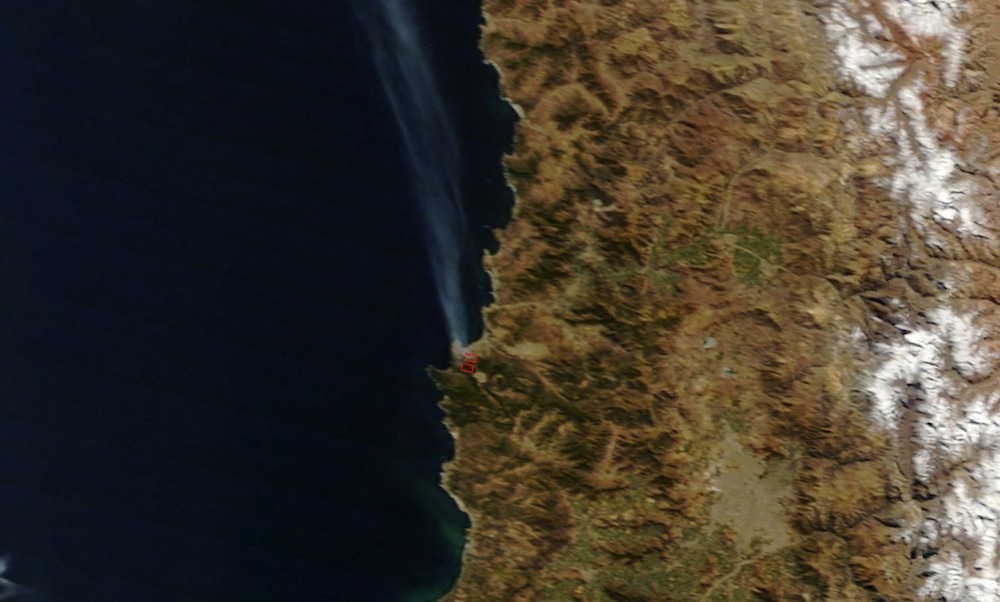Chilean Port City Fire Seen from Space (Photo)

What looks like a wisp of smoke on a new satellite image is actually the largest fire in the history of Valparaiso, Chile.
Strong winds brought a forest fire into this port city of 280,000 over the weekend, NASA's Earth Observatory reports. About 10,000 people had to evacuate their homes, and at least 15 have died, according to news reports.
As of this morning (April 15), the fire still burned, though it was contained, according to the Associated Press. The neighborhoods devastated by the fire are built on steep, forested hillsides without access to water connections, and the winds continue to threaten to carry the fire to new areas. Officials are already discussing ways to rebuild the city, a UNESCO World Heritage site.
An instrument on NASA's Terra satellite captured this snapshot of smoke from Valparaiso at 11:10 a.m. local time on Sunday (April 13). The fire's origin in the forest outside of the city is seen outlined in red. The smoke plume hints at the strong winds that pushed the fire toward the population center.
Valparaiso is an old city, but the port's sorrow is a sign of what might be as humans continue to build into fire-prone areas. In the western United States, for example, more houses abut wildland than in the past. Homes are often spaced far apart and are difficult for firefighters to reach.
"One of the things that keeps coming out of my studies is that fire frequency tends to be highest when there's low to medium housing density and when homes are scattered in isolated clusters of development," Alexandra Syphard, an ecologist at the Conservation Biology Institute in La Mesa, Calif., told Live Science in 2013. That year, the Black Forest Fire north of Colorado Springs, Colo., became the most deadly in the state's history, destroying at least 509 homes. The fire blew past the record set only the year before by the Waldo Canyon Fire within the Colorado Springs city limits, which destroyed 346 homes.
Follow Stephanie Pappas on Twitter and Google+. Follow us @livescience, Facebook & Google+. Original article on Live Science
Get the Space.com Newsletter
Breaking space news, the latest updates on rocket launches, skywatching events and more!
Join our Space Forums to keep talking space on the latest missions, night sky and more! And if you have a news tip, correction or comment, let us know at: community@space.com.

Stephanie Pappas is a contributing writer for Space.com sister site Live Science, covering topics ranging from geoscience to archaeology to the human brain and behavior. She was previously a senior writer for Live Science but is now a freelancer based in Denver, Colorado, and regularly contributes to Scientific American and The Monitor, the monthly magazine of the American Psychological Association. Stephanie received a bachelor's degree in psychology from the University of South Carolina and a graduate certificate in science communication from the University of California, Santa Cruz.










